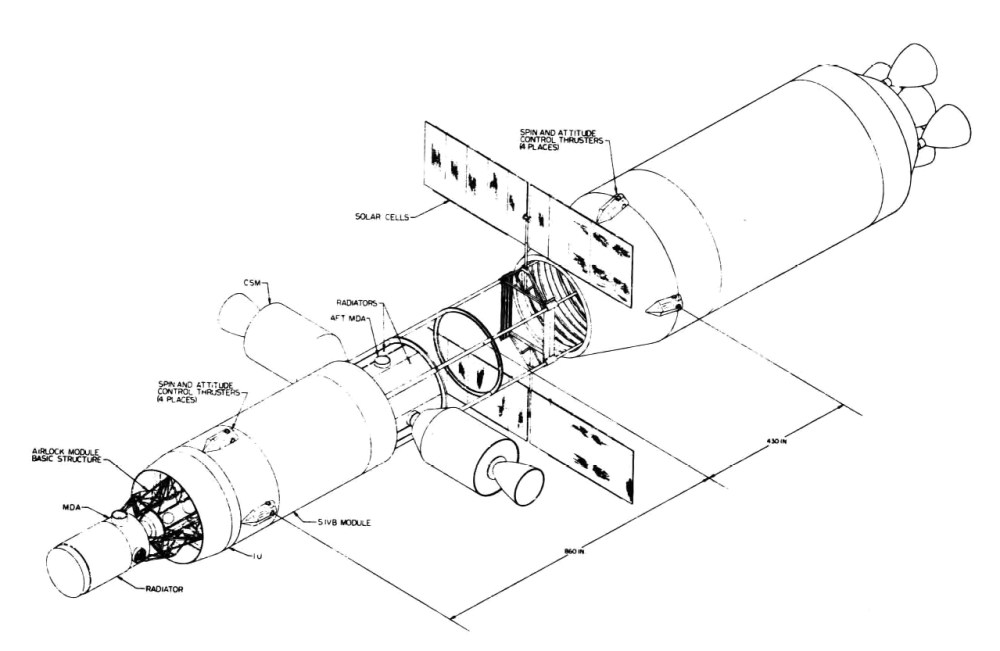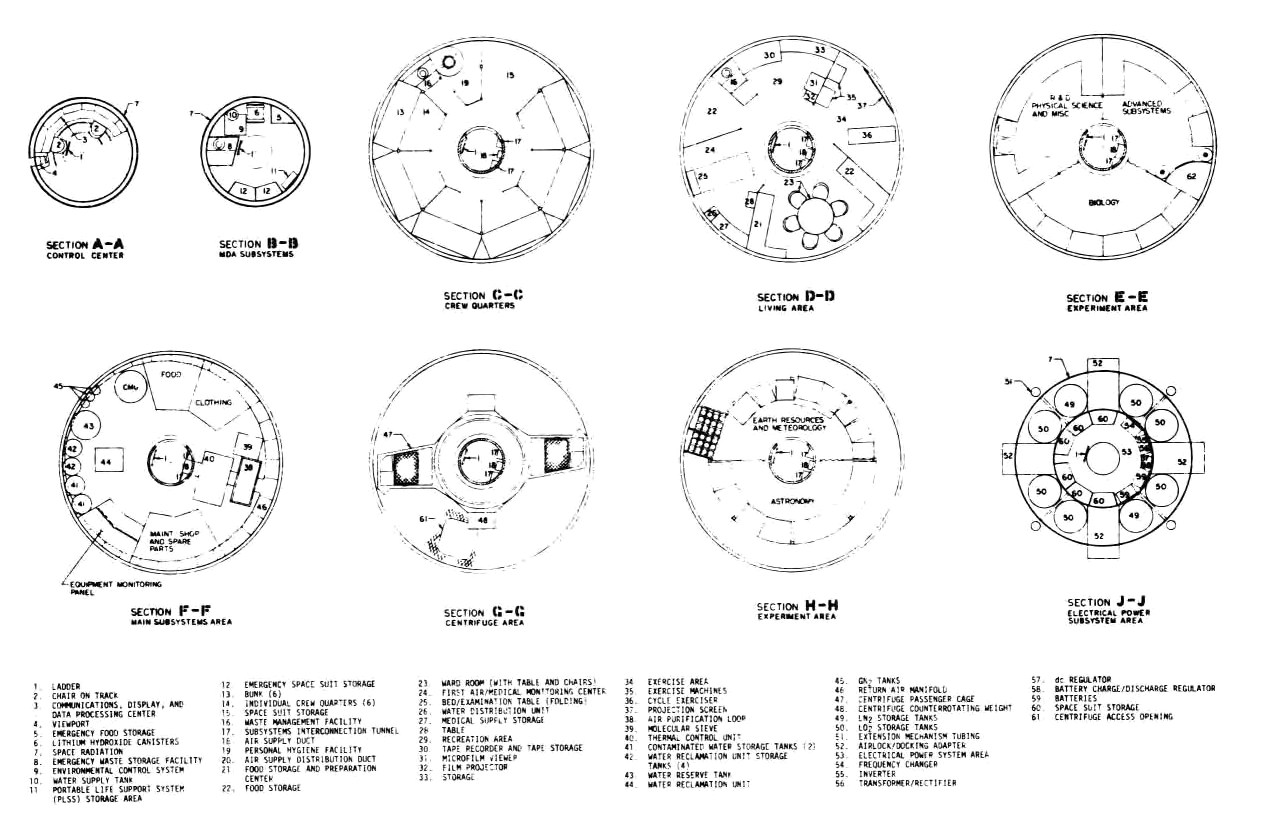From 1967, a NASA-Marshal concept for an orbital workshop based on the S-IVb stage of the Saturn V. While it is in some ways recognizable as a relative of Skylab, there are some major differences… chief of these being that the S-II booster stage would stay attached throughout the life of the station. The Early Orbital Space Station was seen as a more advanced derivative of the Orbital Workshop concept, taking the idea closer to being a true space station rather than a preliminary experimental workshop.
Another major change from Skylab was the deletion of the tank bulkhead separating the hydrogen and oxygen tanks, thus producing one large pressurized volume.
The “Advanced Workshop,” basically two Skylabs linked airlock to airlock, was expected to have a crew of 3 to 6, and be operational from 1969-1972 timeframe. The EOSS was expected to have a crew of 6 to 9, and be operational in the 1971 to 1973 period. With the S-II attached, the EOSS could be “tumbled” end over end to provide artificial gravity.
One Response to “Early Orbital Space Station (Skylab)”
Sorry, the comment form is closed at this time.



That might of had pretty high air drag, especially if they did the tumbling maneuver for artificial gravity.
I saw the S-II stage pass over here (along with the Skylab and the first crew’s S-IVB) and it fell way behind the station in fairly short order after launch…and didn’t stay up all that long before orbital decay from the air drag brought it down. I imagine it stabilized with the engines forward as air drag began to slowly affect it.